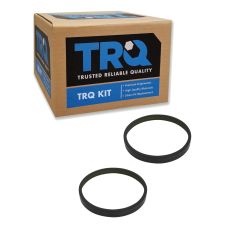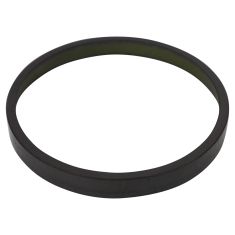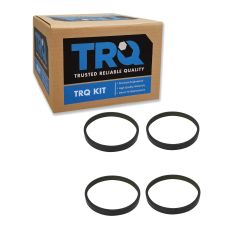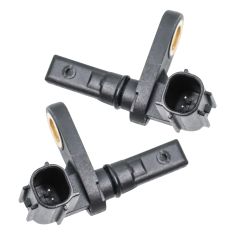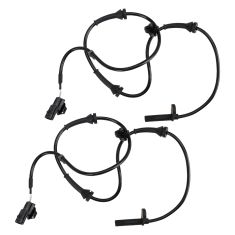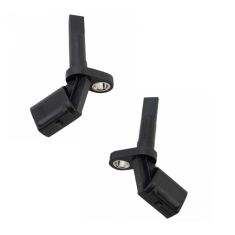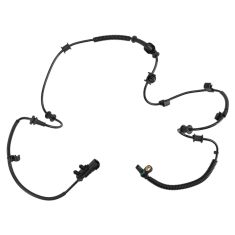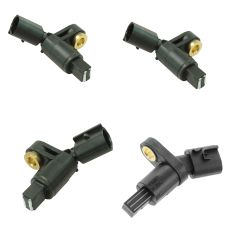ABS Modules, Sensors, & Related
-
-
- Air Deflectors & Valance Panels
- Battery Trays & Related
- Body Panels
- Bumpers & Related - Front & Rear
- Convertible Tops, Soft Tops, & Parts
- Decal & Stripe Kits
- Emblems & Nameplates
- Engine Compartment Trim
- Frame Parts & Bushings
- Fuel Door Parts
- Fuel Tank Filler Neck
- Grille
- Header Panel
- Hood & Hatch Lift Supports
- Hood Latch & Catch Brackets
- Hood Release Cable
- Jack Pads
- Radiator Supports
- Rust Repair Panels
- Splash Shields & Fender Liners
- Tailgate Cables
- Tailgate Hinges & Related
- Weatherstripping
-
- Car Covers
- Exterior Lighting
- Exterior Parts & Accessories
- Exterior Safety & Security
- Exterior Storage
- Fender Flares
- License Plate Brackets & Frames
- Mud Flaps & Splash Guards
- Nerf Bars, Side Steps, Running Boards
- Radio Antenna
- Rain Deflectors
- Roll Bars, Light Bars, & Related
- Roof Rack
- Skid Plates
- Spare Tire Carriers & Related
- Spare Tire Covers
- Tire Care
- Tonneau Covers
- Tow Hooks & D-Shackles
- Towing Accessories
- Trailer Hitch & Components
-
- Accelerator Pedal Pad
- Auto Carpet
- Brake Pedal Pad
- Clutch Pedal Pad
- Console Parts
- Dash Pad Cover
- Dash Vents
- Floor Mats & Liners
- Horns & Horn Parts
- Interior Parts & Accessories
- Mirror - Interior Rear View
- Seat Cover and Sets
- Seat Heater Kits
- Seat Parts and Accessories
- Sun Visors & Related
- Trunk & Cargo Parts
-
- Accelerator Pedals & Sensors
- Alarms, Control Modules, & Remote Start
- Cruise Control Switch & Lever
- Electrical Parts
- Hazard Switch
- Ignition Key Lock Cylinder
- Ignition Switch
- Keyless Entry Remote & Related
- Neutral Safety Switch
- Parking Assist Cameras & Monitors
- Power Mirror Switch
- Power Seat Switches
- Power Window Switch
- Radio, Navigation, Entertainment
- Reverse Light Switch
- Trunk Release & Lock Solenoids
- Turn Signal Switches and Levers
- Windshield Wiper Switch
-
- Idler Arm
- Pitman Arm
- Power Steering Hoses
- Power Steering Oil Cooler
- Power Steering Pressure Sensor
- Power Steering Pump
- Power Steering Pump Cooling Fan
- Power Steering Pump Pulley
- Power Steering Pump Reservoir
- Steering Dampers
- Steering Knuckles and Spindles
- Steering Rack and Gear Boxes
- Steering Shafts & Couplers
- Steering Wheels & Column Parts
- Tie Rods & Adjusting Sleeves
-
-
-
-
1334
134
10
10
-
Notify When Available
Replaces Dodge Chrysler Driver & Passenger Side 2 Piece ABS Tone Ring Set TRQ BSA14836
Brand: TRQ - BSA14836$31.95Save 9%List $34.95 Save $3.00Brand: TRQ - BSA14836$31.95Save 9%List $34.95 Save $3.00 -
Notify When Available$23.45Save 10%List $25.95 Save $2.50Brand: TRQ - BSA71650$23.45Save 10%List $25.95 Save $2.50
-
Notify When Available$41.95Save 19%List $51.95 Save $10.00Brand: TRQ - BSA14835$41.95Save 19%List $51.95 Save $10.00
-
Notify When Available
Replaces Hyundai Kia Rear Driver & Passenger Side 2 Piece ABS Wheel Speed Sensor Set TRQ BSA14062
Brand: TRQ - BSA14062$49.95Save 22%List $63.95 Save $14.00Brand: TRQ - BSA14062$49.95Save 22%List $63.95 Save $14.00 -
Notify When Available
Replaces Toyota Lexus Driver & Passenger Side 2 Piece ABS Wheel Speed Sensor Set TRQ BSA18059
Brand: TRQ - BSA18059$48.45Save 25%List $64.95 Save $16.50Brand: TRQ - BSA18059$48.45Save 25%List $64.95 Save $16.50 -
Notify When Available
Replaces Toyota Sequoia Tundra Driver & Passenger Side 2 Piece ABS Wheel Speed Sensor Set TRQ BSA14228
Brand: TRQ - BSA14228$37.45Save 26%List $50.95 Save $13.50Replaces Toyota Sequoia Tundra Driver & Passenger Side 2 Piece ABS Wheel Speed Sensor Set TRQ BSA14228
Brand: TRQ - BSA14228$37.45Save 26%List $50.95 Save $13.50 -
Notify When Available
Replaces Nissan Altima Maxima Rear Driver & Passenger Side 2 Piece ABS Wheel Speed Sensor Set TRQ BSA14089
Brand: TRQ - BSA14089$34.95Save 26%List $46.95 Save $12.00Replaces Nissan Altima Maxima Rear Driver & Passenger Side 2 Piece ABS Wheel Speed Sensor Set TRQ BSA14089
Brand: TRQ - BSA14089$34.95Save 26%List $46.95 Save $12.00 -
Notify When Available
Replaces VW Audi Driver & Passenger Side 2 Piece ABS Wheel Speed Sensor Set TRQ BSA70094
Brand: TRQ - BSA70094$35.45Save 28%List $48.95 Save $13.50Brand: TRQ - BSA70094$35.45Save 28%List $48.95 Save $13.50 -
Notify When Available$29.95Save 29%List $41.95 Save $12.00Brand: TRQ - BSA12734$29.95Save 29%List $41.95 Save $12.00
-
Notify When Available
Replaces VW Beetle Golf Jetta Audi TT Front & Rear 4 Piece ABS Wheel Speed Sensor Set TRQ BSA71272
Brand: TRQ - BSA71272$39.95Save 29%List $55.95 Save $16.00Brand: TRQ - BSA71272$39.95Save 29%List $55.95 Save $16.00
loading...
Choose the Make of Your Vehicle
